If you’re involved in solar panel cleaning in California, understanding and following safety regulations is critical. Cleaning solar panels often requires working at heights and dealing with live electrical systems, both of which present significant risks. To ensure that you’re staying safe and compliant, it’s essential to follow the California Occupational Safety and Health Administration (Cal/OSHA) guidelines. This article covers the key Cal/OSHA solar panel cleaning safety principles in California, focusing on working at heights, fall protection, and electrical safety.
Incorporating the latest Cal/OSHA regulations is vital not only for your safety but also for maintaining compliance with state laws. Let’s dive into the critical safety measures that every solar panel cleaner in California must follow.
1. Working at Heights (California Code of Regulations, Title 8, Section 1670 – Personal Fall Protection)
When performing solar panel cleaning tasks, working at heights is often unavoidable. In California, Cal/OSHA has specific rules in place for anyone working at heights of 4 feet or more. Understanding these rules is crucial for preventing falls and ensuring safety.
– Fall Protection Plan: All employers must have a detailed fall protection plan. This includes selecting proper equipment and defining procedures to minimize fall risks.
– Guardrails and Personal Fall Arrest Systems: Where guardrails aren’t feasible, workers are required to use personal fall arrest systems, such as full-body harnesses.
– Anchor Points: The anchor points used for fall arrest systems must be capable of supporting at least 5,000 pounds per worker to ensure adequate safety.
Key Rule: If you’re cleaning solar panels at heights above 4 feet, you must use appropriate fall protection equipment such as harnesses or guardrails.
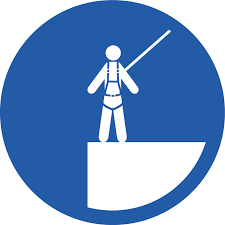
2. Ladder Safety (California Code of Regulations, Title 8, Section 3276 – Portable Ladders)
Ladders are frequently used in solar panel cleaning. However, ladders pose a significant risk if not used correctly, and Cal/OSHA has strict guidelines on their use.
Cal/OSHA requires solar panel cleaners to follow a Working at Height Risk Hierarchy when determining safe access to a roof. This hierarchy emphasizes eliminating or minimizing risks before using more hazardous methods. The first priority is to avoid working at height altogether if possible, for example by using long-reach tools or ground-based systems. If rooftop access is necessary, safer alternatives such as guardrails, scaffolding, or aerial lifts should be considered. Cal/OSHA clearly states that ladders should be used only as a last resort, as they present a higher risk of falls and offer limited stability. Employers and workers are expected to evaluate all possible access options and choose the method that ensures maximum safety while complying with Cal/OSHA regulations. If ladders are to be used as a last resort, after all other access options have been exhausted, here are ladder guidelines:
– Stable Setup: Ensure the ladder is stable on firm ground, with a 4:1 angle—for every 4 feet of height, the ladder’s base should be 1 foot away from the structure.
– Three Points of Contact: Always maintain three points of contact (either two hands and one foot or two feet and one hand) while climbing the ladder.
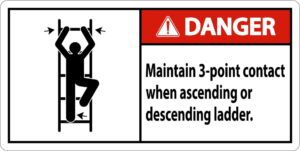
– Limited Duration Use: For longer-duration jobs, consider using more secure equipment like scaffolding or aerial lifts instead of a ladder.
Key Rule: Use a properly secured ladder for quick tasks, but opt for more stable options like scaffolding for extended work on solar panels.
3. Roof Work Safety (California Code of Regulations, Title 8, Section 1730 – Roofing)
When working on roofs during solar panel cleaning, it’s important to follow Cal/OSHA’s safety guidelines to avoid dangerous falls, especially around unprotected edges or skylights.
– Edge Protection: When working within 6 feet of a roof edge, Cal/OSHA requires some form of fall protection, such as guardrails or warning lines.
– Skylight Protection: All skylights must be either covered or equipped with screens to prevent workers from falling through them.
Key Rule: Always verify that edge protection and skylight covers are in place before starting work on a rooftop.
4. Electrical Safety (California Code of Regulations, Title 8, Section 2320.4 – Energized Equipment or Systems)
Solar panels produce electricity, making electrical safety a key concern during cleaning. Cal/OSHA has established regulations that are essential to prevent electric shocks or other electrical hazards.
– Safe Distances: Keep at least 10 feet away from overhead power lines while working. See this ISCA article for more information about safely solar panel cleaning near overhead power lines.
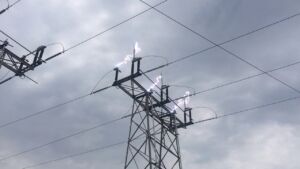
Key Rule: Solar panels cannot be turned off during cleaning. Lock out tag out procedures that normally apply to work around live electrical equipment do not apply for solar panel cleaning. The only line of defence is your Personal Proptective Equipment (P.P.E.). Always remember that the panels you are cleaning are live.
5. Personal Protective Equipment (PPE) (California Code of Regulations, Title 8, Section 3380 – Personal Protective Devices)
Wearing the proper personal protective equipment (PPE) is a vital part of solar panel cleaning safety. Cal/OSHA mandates that employers provide the appropriate PPE based on job-specific hazards.
– Fall Protection Gear: For tasks involving heights, workers must use full-body harnesses and connect to an anchor point.
– Electrical PPE: When working near electrical components, wear insulated gloves and footwear. ISCA rooftop safety courses discuss in-depth the correct type of gloves and footwear for safe solar panel cleaning.
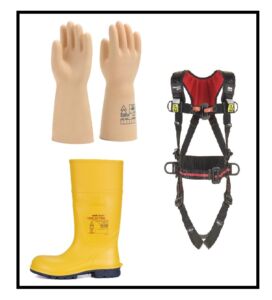
Key Rule: Ensure that you’re wearing the appropriate PPE for the task, particularly when working at heights or near live electrical equipment.
6. Training and Competency (California Code of Regulations, Title 8, Section 3203 – Injury and Illness Prevention Program (IIPP))
In addition to wearing PPE, you need to be properly trained in safe work practices. Employers are required by Cal/OSHA to implement an Injury and Illness Prevention Program (IIPP), which includes safety training.
– Fall Protection Training: Workers must be trained on how to properly use fall protection equipment, such as harnesses and anchor points.
– Electrical Safety Training: All employees must be trained to understand the risks of working near energized electrical equipment and how to de-energize systems safely.
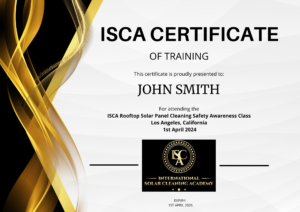
Key Rule: Ensure that you’re trained on all safety protocols, including fall protection and electrical safety, before starting any cleaning job.
7. Emergency Procedures (California Code of Regulations, Title 8, Section 1512 – Emergency Medical Services)
Accidents can happen during solar panel cleaning, so it’s crucial to have emergency plans in place. Cal/OSHA requires employers to have a rescue plan and emergency medical services ready.
– Fall Rescue Plans: If fall arrest systems are being used, there must be a rescue plan in place to quickly retrieve workers in case of a fall.
– First Aid Kits and Responders: Employers must provide accessible first aid kits and ensure trained responders are available on-site.
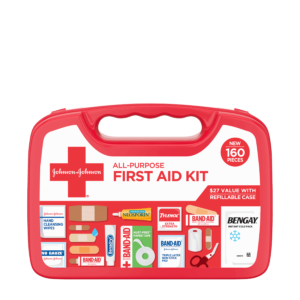
Key Rule: Make sure you’re familiar with the site’s emergency procedures and rescue plans before starting work.
Conclusion: Staying Safe While Cleaning Solar Panels in California
When it comes to solar panel cleaning in California, safety should always come first. Cal/OSHA has set forth specific regulations designed to protect workers from the risks associated with working at heights, dealing with live electrical equipment, and navigating slippery rooftops. Following these guidelines for fall protection, ladder safety, roof work, electrical hazards, and the use of proper PPE will not only help prevent accidents but also ensure compliance with California law.
Proper training, adherence to safety protocols, and preparedness for emergencies are essential to maintaining a safe work environment. Stay vigilant, always use the right equipment, and prioritize your safety on the job. By doing so, you can make sure that your solar panel cleaning work is both safe and effective.
For anyone searching for safer ways to clean solar panels in California, following these essential CA-OSHA regulations will help you minimize risks and ensure a secure, compliant working environment.

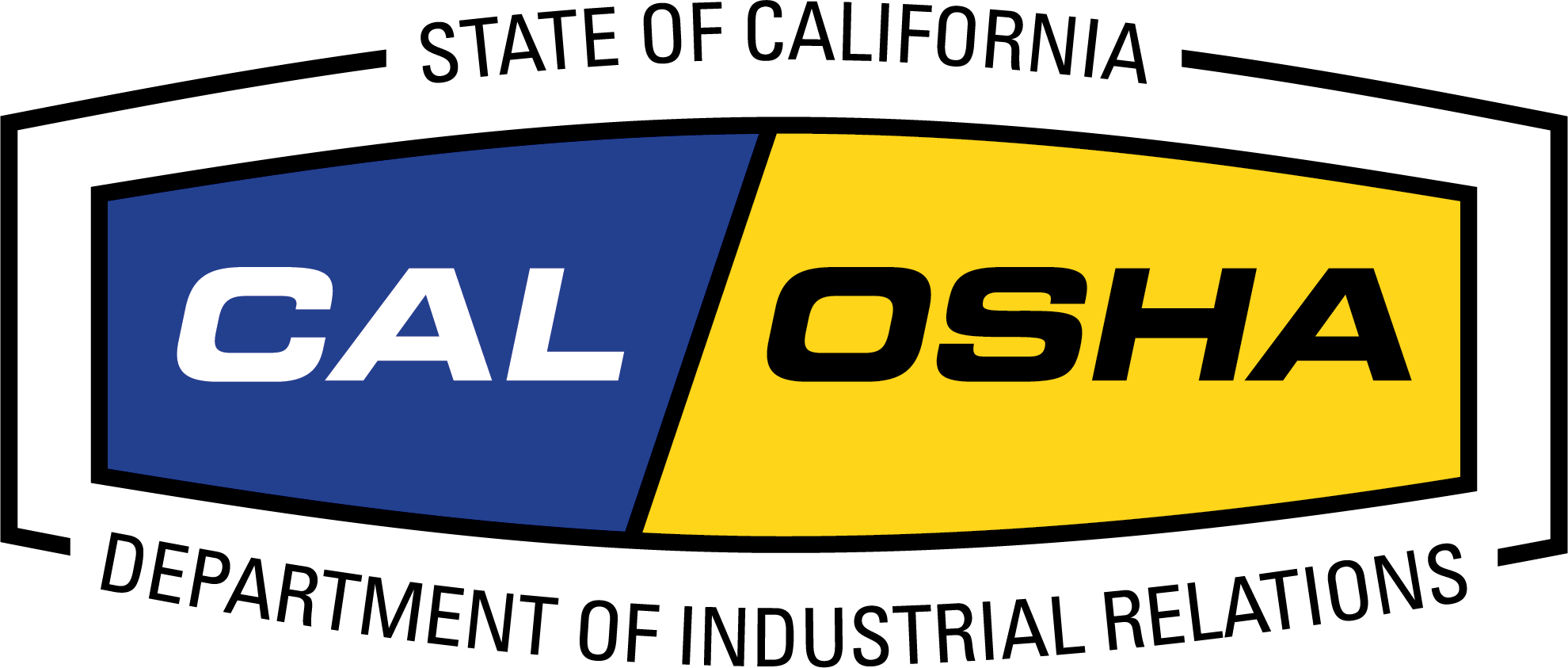
Hello Steve and all involved in the ISCA First Annual Convention. We are very happy to have been a part of this event and to have learned so much extremely useful information. We will be implementing increased safety protocols immediately. Looking forward to the next one!